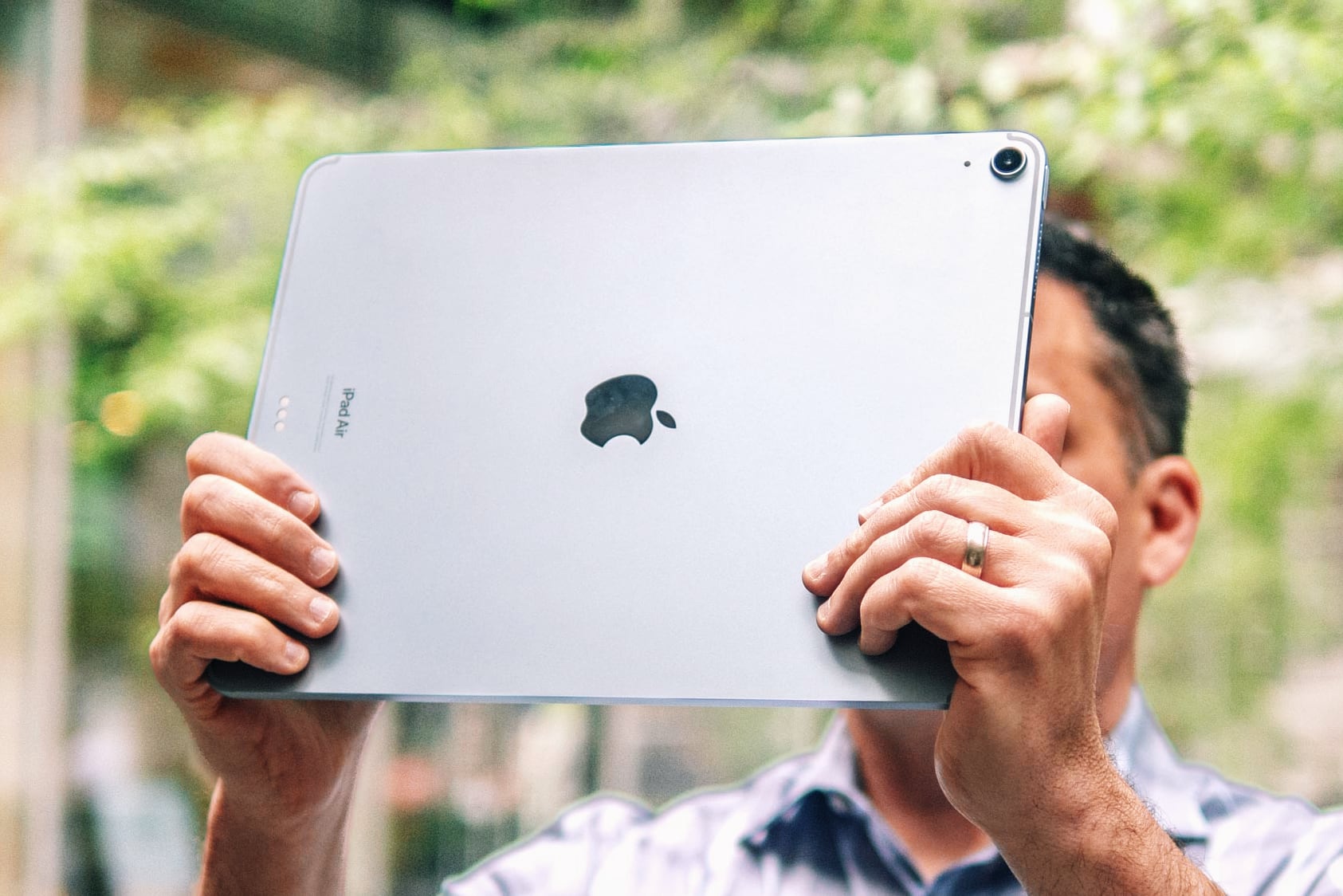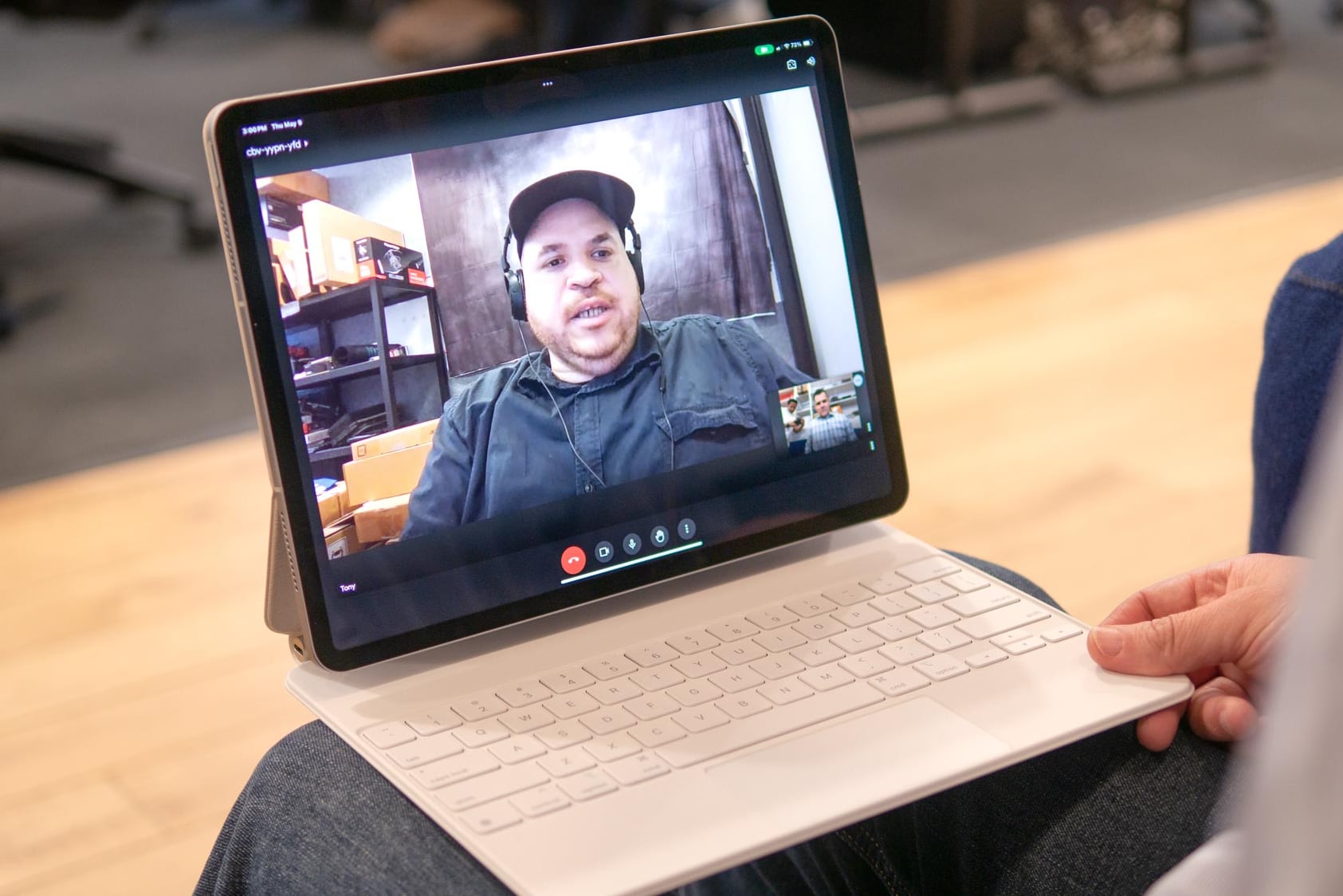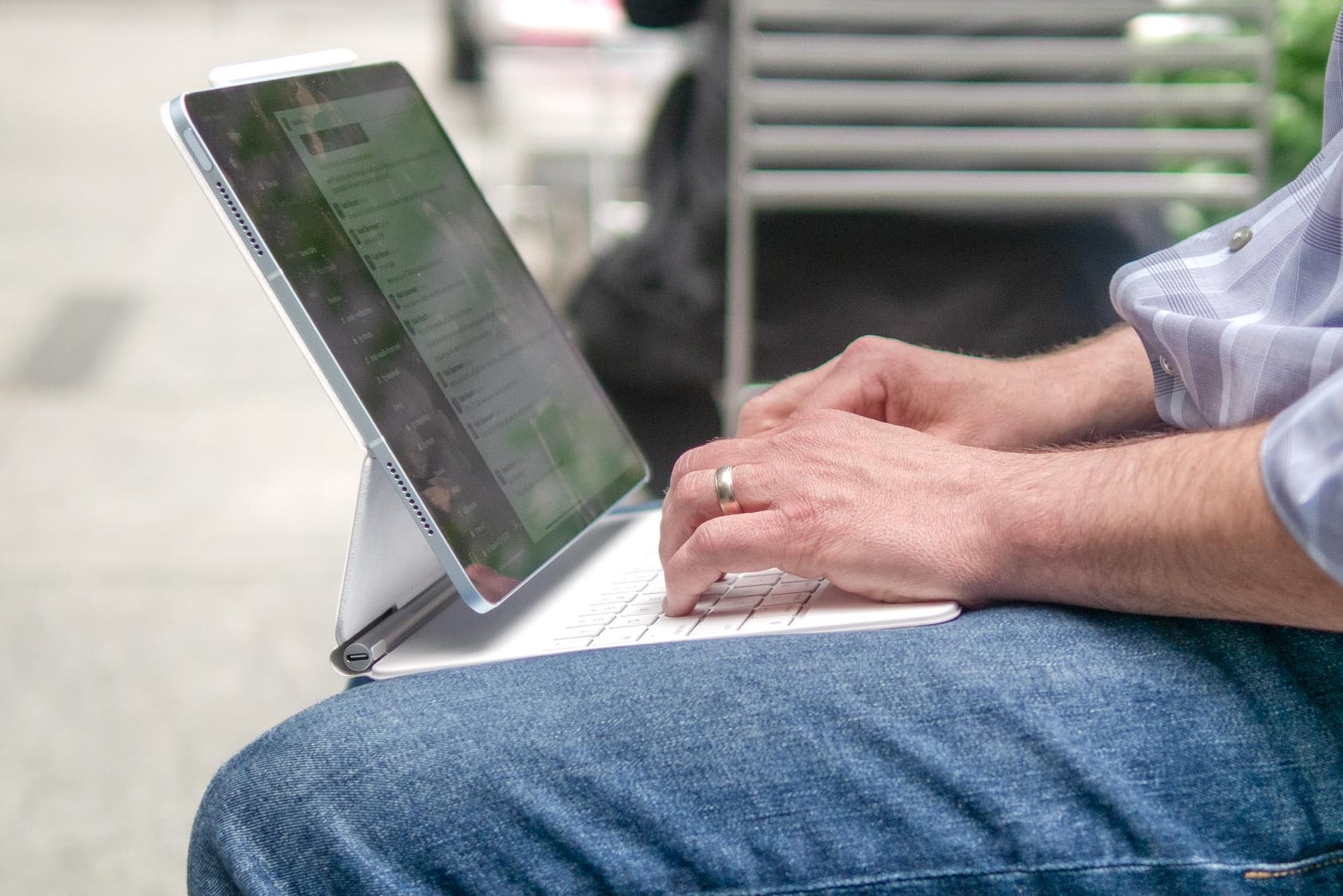Western journalists and bloggers have published reviews of the new iPad Air.
In general, everyone liked the tablet. It has practically no disadvantages, and those that exist are compensated for by the price.
The main problem with the iPad Air is that it competes with other iPads.
1. Edge
The iPad Air is a great iPad, and that’s about it.

The new Air is essentially a past iPad Pro in the body of last year’s iPad Air. Both models are reliable except for screen size. The new 13-inch model is clearly larger in every dimension.
Both new Airs use the same M2 chip as the old Pro, and in my tests they perform almost identically—it’s a solid chip, too, although the new M4 processor in the iPad Pro beats it in performance tests. The screen is the same as last year’s Air, the battery life is the same, the rear camera is the same – it’s just an improvement on the same device’s specs.
The only difference I noticed from the old Air is that Apple placed the front-facing camera in the middle in landscape orientation. This is a big change and one that Apple should have made a long time ago.

You can do a lot of things on the iPad, which is great! But almost the list is the same no matter what tablet you are holding in your hands. The iPad Pro is the best iPad despite our suggestion, but it’s also a very expensive iPad. And it’s still an iPad.
There are only two Pro features that I really miss in day-to-day use since upgrading to the iPad Air. First is Face ID: The Air uses Touch ID in the Home menu. Secondly, the rows of function keys on the Magic Keyboard.

At first we used the Air, which is much closer to the base iPad than the Pro. They both have the same cameras and camera placement, Touch ID, and the same battery life. The Air gets extra points for its slightly improved screen and Apple Pencil Pro support.
If you really need a big screen, buy the 13-inch iPad Air. This is the cheapest Apple tablet with such a display. An iPad Pro with a screen this size costs $500 more.
Otherwise, buy the regular iPad, which is an amazing tablet at the new price.
2. Engadget
It’s certainly an iPad worth buying.

iPad Air remains Apple’s best tablet thanks to its inclusion of various features at a reasonable price. The new 13-inch Air is a great option for those who want a large display without spending a lot of money.
The new 11-inch model is indistinguishable from the 10.9-inch model it replaces. Don’t let Apple fool you into thinking the screen is a full 0.1 inches larger this year, because it’s not: the company is just rounding up the numbers. The same goes for the 13-inch Air itself. It has the same size and 12.9-inch screen resolution as the old iPad Pro.
The M2 chip is a benefit to the iPad Air, but note that if you have the 2022 model with the M1, you won’t experience much of a performance boost here.

I’m also very glad that the base iPad Air has 128GB of internal storage, rather than the 64GB it had in the last generation. And you can also get 1TB of storage on the Air first if you need it.
That’s basically all the changes to this year’s iPad Air. The display remains the same. That’s very good, but it’s clearly not on the level of the OLED in the iPad Pro or even the mini-LED in previous iPad Pros.

The rear camera is identical to the body of the iPad Air, which is fine. With good resolution, it takes decent pictures, and can also record 4K video. You can’t shoot ProRes video, but that certainly won’t be a problem for Air owners.
The iPad Air offers 80% of the features of the iPad Pro for much less money, making it the better choice among Apple’s tablets.
3. Tom’s Guide
It does not replace a laptop.

The 2024 iPad Air offers a larger 13-inch display, impressive M2 chip performance, and battery life for significantly less money than the iPad Pro.
The biggest problem with the iPad Air is that it hasn’t learned to find a laptop, even though it costs the same as my laptop. If you choose the 13-inch iPad Air with Magic Keyboard, you’ll pay a minimum of $1,148. The price of the new Apple Pencil Pro will increase to $1,277.
The Magic Keyboard itself provides pretty good tactile feedback, and I like that you can rotate the display to achieve high viewing angles. But typing with this digital tablet and the buttons on your lap is awkward because the design is too wobbly.

Another problem is iPadOS itself. Apple has tried to do a lot of things more clearly with the Stage Manager feature, which puts your main app in the foreground and pushes other apps to the left in a layout style. You can run two apps at the same time in split view mode. But honestly, none of this compares to multitasking on macOS.
I found it extremely difficult to do my normal work on the iPad Air. In Google Sheets, I constantly have to click buttons at the bottom of the screen rather than inside the row itself. And as a Chrome person, I don’t like it when I use dedicated Gmail, Sheets, and Docs apps behind an anonymous name instead of going tab-to-tab in the browser.
Even the look in iPadOS is completely different. What is the best way to tilt a circle? Either way, touchpad gestures work well. But why isn’t iPadOS smart enough to understand that when I type something on the Home screen, I’m looking for an app? First, you need to swipe down to launch Spotlight.
🔥 By the way, we are giving away AirPods Pro 2 with USB-C right now in our Telegram channel! Click and participate 😎
Source: Iphones RU
I am a professional journalist and content creator with extensive experience writing for news websites. I currently work as an author at Gadget Onus, where I specialize in covering hot news topics. My written pieces have been published on some of the biggest media outlets around the world, including The Guardian and BBC News.











